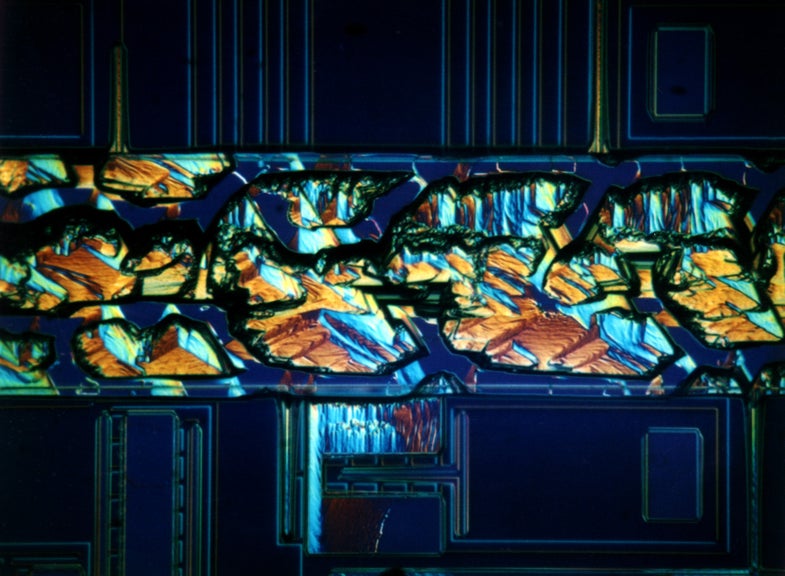Quantum Microscope Uses Spooky Entangled Photons To See Better
Crisper images through physics

There’s a new experimental microscope that visualizes incredibly difficult-to-see things with incredible accuracy via entangled photons, MIT Technology Review reports. You know, for those moments when unentangled photons just aren’t enough.
The new microscope’s creators think entangled photons could improve the technology scientists currently use to see transparent things under a microscope. You might have seen some images made using this technology, called differential interference contrast microscopy. The pictures are pretty cool:

Green Algae

Silicon Wafer II, 1979
Ordinary differential interference contrast microscopy uses beams of independent, unentangled photons—ordinary light—to measure these textures. Entangled photons are different. They take advantage of an eerie phenomenon in physics, called quantum entanglement, in which two particles “share the same existence.” Even if they are far apart, entangled particles are correlated with each other, as if one “knows” what’s happening to the other. Albert Einstein famously called quantum entanglement “spooky action at a distance.”
Normally, in differential interference contrast microscopy, the microscope aims two beams of unentangled photons, right next to each other, at on object. The microscope then measures how the photons come reflecting back. Those measurements tell the microscope something about the texture of the object in the exact places where the photons hit the object.
Entangled photons offer even more precise measurements than unentangled photons, however. Technology Review explains: “A measurement on one entangled photon gives you information about the other, so together they provide more information than independent photons.”
Too weird? Well, you can see some easier-to-understand evidence of the phenomenon at Technology Review. Look at the image at the top of that page. You can see two images of the same tiny letter Q, which scientists etched onto a transparent glass plate. The picture on the left was made using entangled photons, while the picture on the right used unentangled photons.
The microscope comes from three physicists at Hokkaido University and Osaka University in Japan. They published a paper about their work last year in the journal Nature Communications.